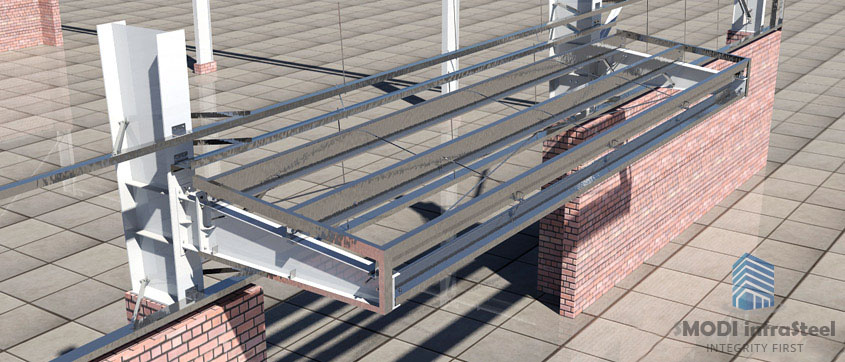PRIMARY FRAMING SYSTEM
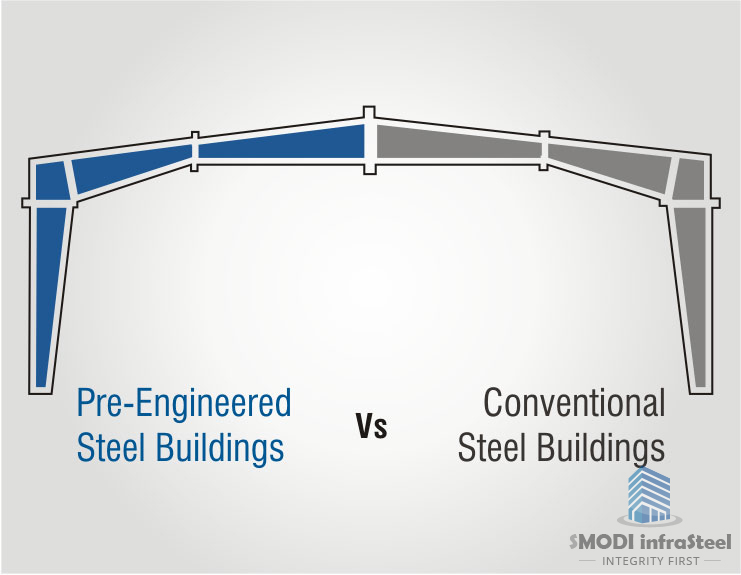 A Pre-Engineered steel building is different than the typical convention building in many ways. Pre-Engineered steel building is portal frame construction comprises of primary and secondary framing and bracing system. A combination of these three elements and weather covering sheeting results in stable steel buildings instead of individual frame. In case of conventional structure, individual column and truss are separately designed and free standing frames resulting bulky and heavy structure.
A Pre-Engineered steel building is different than the typical convention building in many ways. Pre-Engineered steel building is portal frame construction comprises of primary and secondary framing and bracing system. A combination of these three elements and weather covering sheeting results in stable steel buildings instead of individual frame. In case of conventional structure, individual column and truss are separately designed and free standing frames resulting bulky and heavy structure.
Pre-Engineered steel building system offer various type of steel framing system for various economic module and options as per functional need and aesthetic choices.
Some standard frame options are as under:
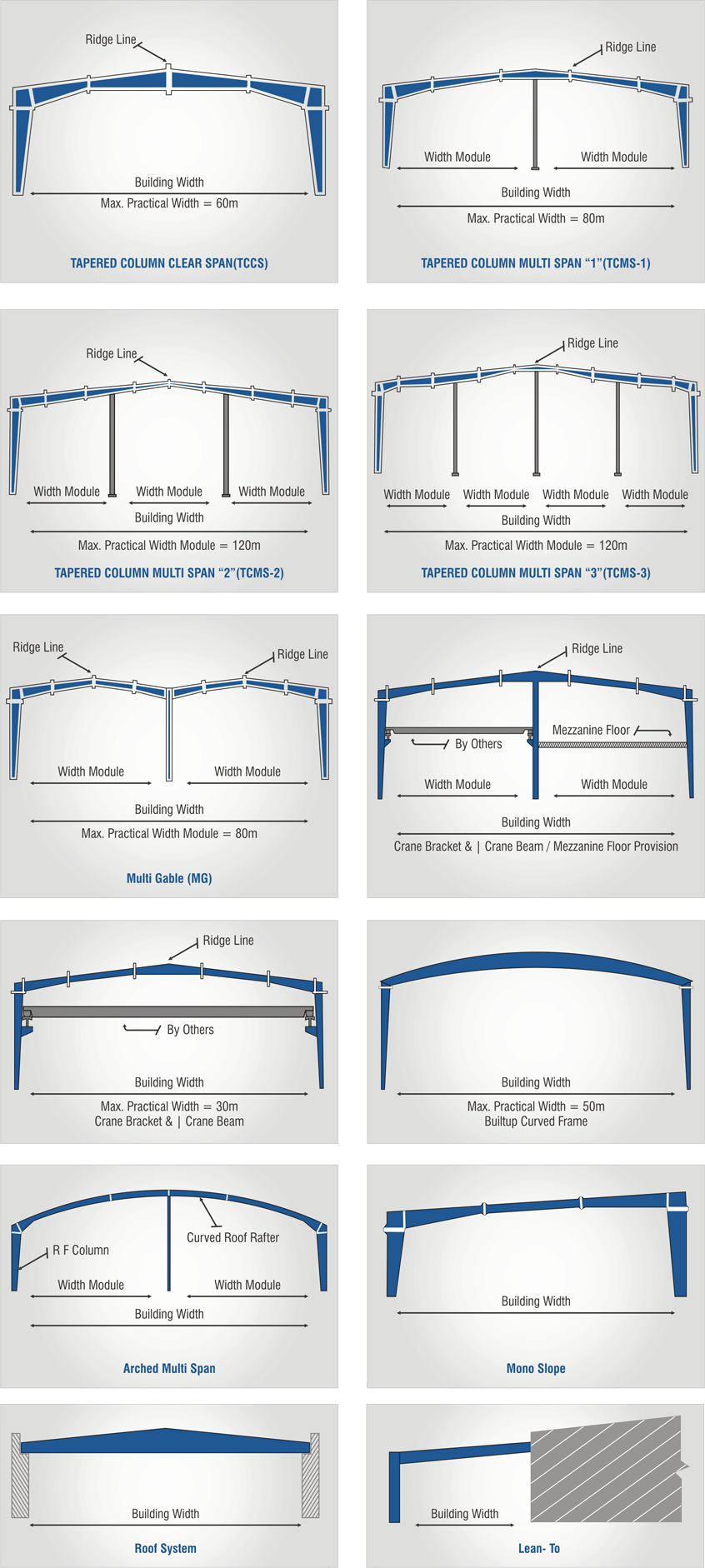
COLUMN –RAFTER CONNECTION
As per choice of designer and functional need of the framing system, column to rafter connection can be design in various ways. In each option of rafter-column design, there are different merits and demerits as steel consumption also keep on varying in each option. Therefore it is necessary for designer to opt. for economical connection unless some functional constraints are there.
Some of the typical column-rafter design details have been mentioned below:
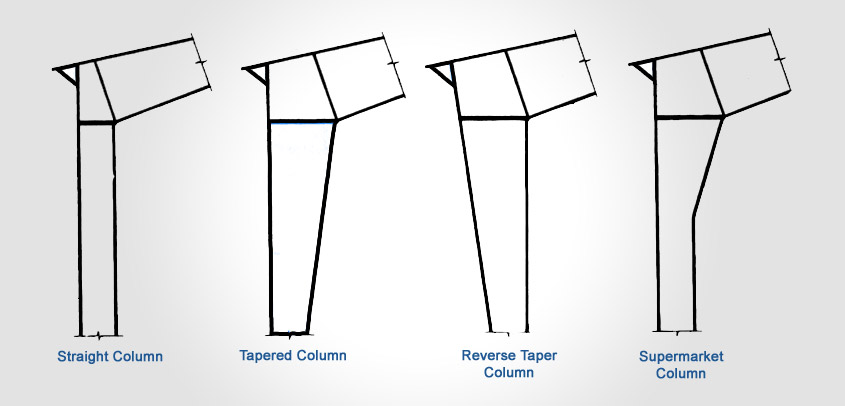
As a standard practice and ease of erection and economics following priority is recommended;
- Tapered column top resting rafter (picture-2)
- Tapered column super market column (picture-4)
- Straight column top mounted rafter (picture-1)
- Reverse taper column top mounted (picture-3)
- Designer recommends column rafter connection on side mounted also instead of top mounted in all above four options.
SECONDARY FRAMINGS SYSTEM
Secondary framing system is mainly purlin and girt of Z or C shapes of various sizes. In Pre-Engineered buildings normally cold form Z sections are used for secondary framing to achieve high strength and lower weight. Typically cold form members used for roof are called purlin and for wall it is called as girt however profile for the both in general is same. Sometime C section is also used in place of Z. Purlin/Girts are the members which transfers forces and moments from one frame to another frame for overall stability of the building structure and it all acts as framing system for weather covering sheeting purpose. For all practical purpose these members are spaced at an interval of about 1.5 m which can vary and placed perpendicular to the direction of rafter.

Typical purlin and girt connections are shown below for better understanding:

Rafter to purlins and girts are always connected using 4.4 grade bolts assembly with the help of L-shape cleats and these are always overlapped by at least 300 mm at each frame location. In addition flange angle is also used to connect purlin and bottom flange of the rafter to provide better restraining to rafter for economy reason.
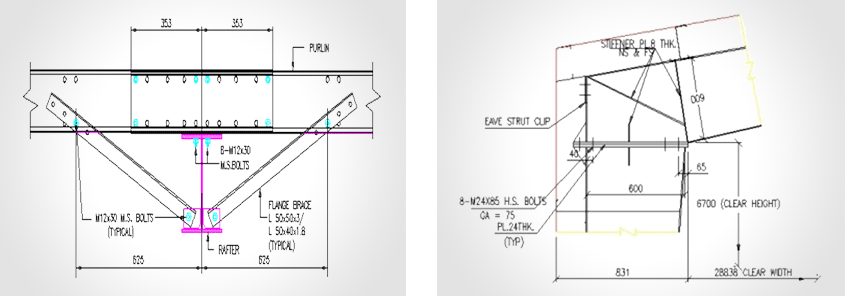
Purlins are also used for various services support such as electrical lines, fans, air lines, false ceiling support etc. after adequately designed for desired load purpose.
ROOF & WALL BRACING SYSTEM
For transfer of wind force and other acting loads form building frame to the foundation at certain interval x-bracing system is used to change the direction of forces for reducing the impact of forces. Normally 2nd and 2nd last bays are preferably designed as braced bay and in between every 4th bay shall be braced bay for economical reason. These braced bays are for roof as well as wall between two frames (bay) . Some time roof bracing and wall bracing may be in adjoining bays separately however the stability of the structure shall be checked first before doing so. Normally rod, pipes or angles are used for x-bracing purpose. In wall bracings are laid between two columns form haunch to bottom of columns

In exceptional case, where clear height is needed for access for doors or windows then in place of X-bracing portal bracing is used as shown above.
WEATHER COVRING ROOFING & CLADDING
In order to provide weather covering for roof and walls from external condition, steel structure need to be covered fully/partially as per functional requirement. For all purpose this covering provides access for all architectural and function requirement as well. Normally, metal profiled steel sheets are using for covering purpose. Now a day’s different color/color combination are used to make building more aesthetic & elegant. There are various other elements of sheeting such as flashings, trims, ridge cover, peak panel, rack trim, drip trim etc. which is made of same material as of sheeting and equally important for weather tight functioning of the building. In addition, proper rain water gutter for collection of rain water and down take pipe for discharge of water from gutter to the ground is also key element to the building for overall performance of the building. All sheeting are joined together with the help of self drilling/self tapping screw and necessary sealing material such as butyl tape, sealant, foam filler etc. are used to make building more efficient.
Various elementary details for weather covering are shown below:

Pictures of Roofing & Cladding materials:

ANCHORING
In order to install the steel building on RCC pedestal/foundation, it is necessary to have an anchoring system suitably designed to take up various loads and forces of the building and to transfer the same to the ground through anchor bolts arrangement. Size of anchor bolts and its quantities are designed as per reactions calculated as per building design. Various typical details of foundation anchoring and related member interface are shown below.
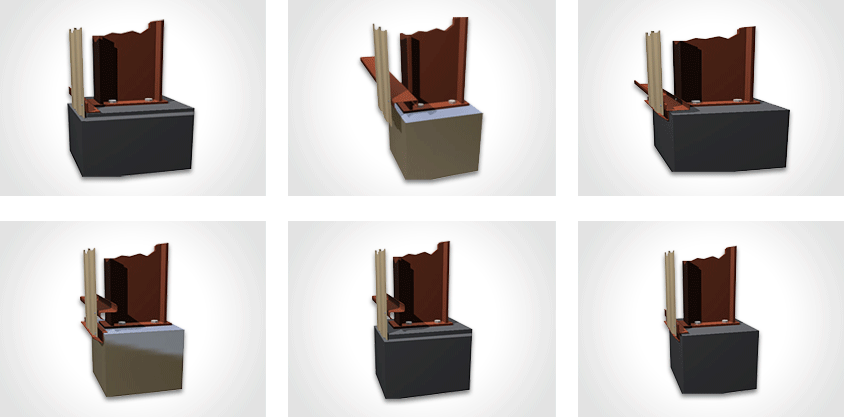
BUILDING ACCESSORIES
There are various other building elements which may not be important structurally but very important functionally and it adds performance of the building. Skylight, wall light, Doors, windows, louvers, ventilators, turbo-vent, insulations, roof curb etc. are equally important to smooth functioning of the building.
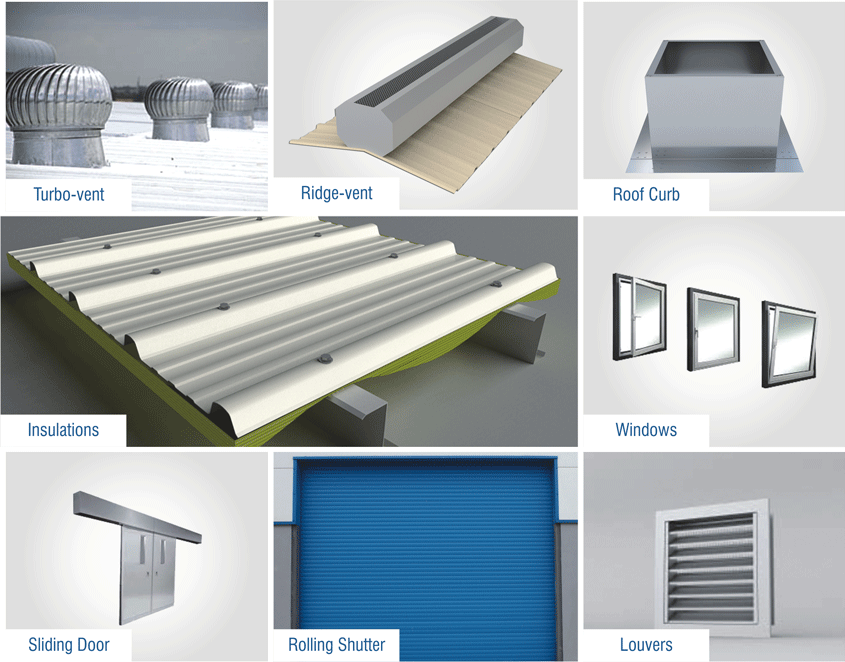
MEZZANINE SYSTEM
Now a day’s construction of mezzanine system is very common being used in steel building for various purposes. In most of the factory or warehouse building shop floor office, production offices, stores, maintenance office, wash rooms, canteen etc. are made above the shop floor area wherever surplus head rooms are available. This also helps in saving the floor area as well creates ease of serving being closely. This also reduces the cost of construction A typical mezzanine system is basically a joist beam construction taking support from the building columns as per availability and top of beams and joist deck slab is pored over GI decking of profiles metal sheet. A light reinforcement over decking and light concrete is used to make a permanent floor. Typical mezzanine details for various elements are shown below.
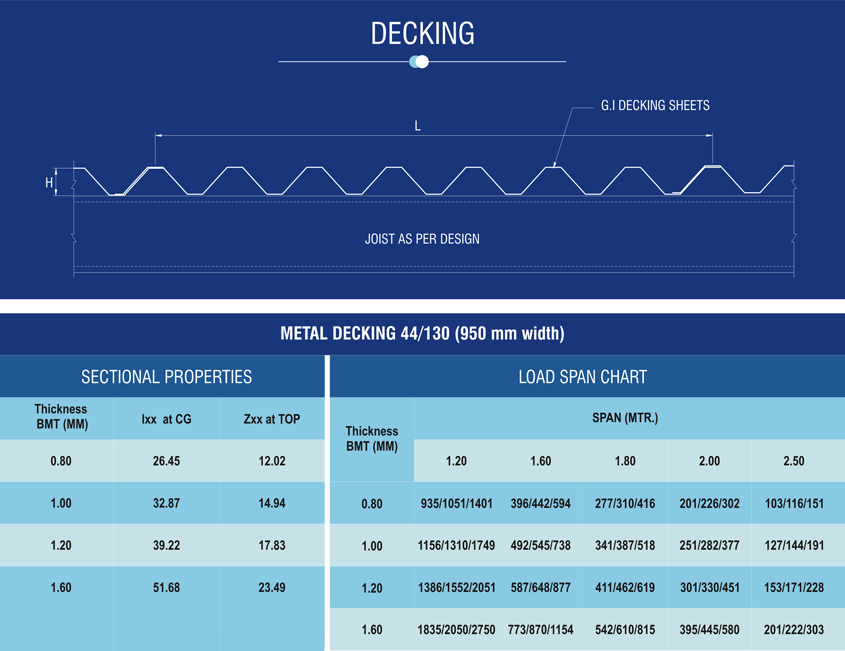


CRANE SYSTEM
All pre-engineered steel buildings can be designed for crane operation provision as per operational need. There is various type of crane being used in industry for various purposes.
- EOT overhead crane with pendant or cabin operated.
- Overhung/under-slung crane system
- Monorail crane or hoist system
- Wall mounted crane
- Jib crane
For each type of crane there is suitable design criteria for peb design and structure can be adequately designed to meet the functional requirement and crane provider. SMODI INFRASTEEL provides all necessary structure e.g. crane brackets, crane girders, end plate walkways, cage ladder for access etc. as per user requirement.

CANOPIES
These are basically acts as sun-shed over doors or windows to protect the rain water/sun access to the building. These are structurally designed and supported on building columns and covered with sheeting materials.
